Our world is no longer what it used to be.
Gone are the days of dialing numbers and waiting in uncertainty, or hailing taxis in the biting cold. From sizzling pepperoni pies in the digital oven at Domino's to your neighbor moonlighting as your taxi driver via Uber, our cravings and commutes are now taken care of with the tap of an app.
We’re in an era where the push for digital and physical personalization is not a luxury, but an absolute necessity, and businesses are hustling to either evolve or be lost in oblivion. And because the demand for digital and physical personalization is higher than ever, the pressure on marketing teams to harness customer data is following suit.
But there’s an avalanche of data surrounding modern businesses. Everything from customer behavior to marketing performance is measured and stored, resulting in an unorganized mess of information.
So, to truly tap into the potential of this data, organizations need to understand and employ something known as warehouse-native Data Activation. Data Activation, the concept of unlocking customer insights in the warehouse and making them actionable, is the key to staying ahead of the competition and driving customer engagement.
While it’s useful for all business units, Data Activation is particularly useful for marketing teams because of their inherent need for personalization. And that’s nothing new! Marketers have always craved more data for better personalization, but the use of the data warehouse in marketing is still a relatively new phenomenon.
Now, the data warehouse (or data lake) is emerging as the single source of truth for marketing teams to do their job better and faster with customer data – and it’s instrumental in streamlining marketing efforts, delivering personalized experiences, and driving significant business growth.
Defining Data Activation
In the current business landscape, an average company uses over 130 different SaaS applications, each generating a multitude of data. The result? A fragmented mass of data spread across different platforms, making the task of extracting actionable insights a significant challenge.
Originally, businesses addressed this issue by consolidating their data into a centralized data warehouse which did, in fact, create a single source of truth. But all those insights were trapped between two worlds – one that was technical and the other one that wasn’t.
The reality is: Data teams clean, centralize, and govern data in the warehouse for analytics, but business teams do their everyday work in tools like Salesforce, HubSpot, and Zendesk. Sure, data was shared through dashboards and CSVs, but it was generally inaccessible to non-technical users.
Warehouse-native Data Activation serves to change this paradigm. Data Activation is the process of unlocking and transforming raw, disparate data, often stored within a data warehouse or data lake, into actionable insights that inform and enhance business decisions and customer experiences.
Simply put, it acts as the critical bridge that links raw data to meaningful, business-enhancing outcomes. By connecting to your existing first-party data, it transforms the data you already have into a format easily understood and used by both data and marketing teams.
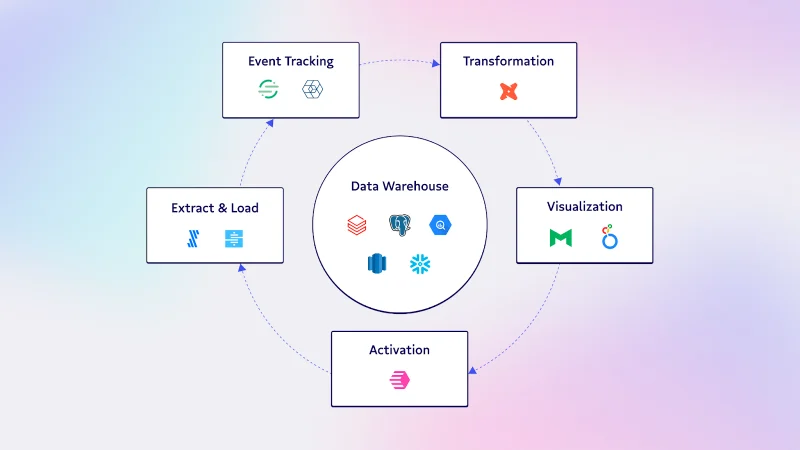
Think of Data Activation as turning a complex, uncharted forest into a neatly organized, easily navigable map. It empowers teams to discover hidden treasures (otherwise known as key customer insights).
Importance of Data Activation for Marketing
Although marketers have always collected loads of data, taking informed action based on that data is more crucial than ever.
But the raw data they’ve collected, in its unprocessed form, offers little value to anyone – marketers included. It's like owning a gold mine but not knowing how to extract and refine the gold. This is where Data Activation steps in, transforming the raw, unstructured data into valuable insights that marketers can readily use.
The transition from conventional marketing to data-driven marketing has revolutionized the industry. Today, marketers can make informed decisions based on concrete data instead of relying on intuition or guesswork.
Now, among other things, Data Activation can significantly enhance customer experiences. By understanding and interpreting customer behavior, businesses can tailor their services or products to better fit the customer's needs.
But it’s also critical for personalizing marketing campaigns and optimizing marketing performance. With a comprehensive view of your audience's needs, interests, and behavior patterns, marketers can deliver messages that resonate with each individual, improving conversion rates and customer loyalty. And with clear insights into what's working and what's not, marketers can maximize the efficacy of their campaigns and drive revenue growth.
See it in Action
To illustrate this, let's consider Netflix. Though once just a blip on Blockbuster’s radar (RIP 🪦), they rapidly took over the streaming world. And to no one’s surprise, they leverage the power of Data Activation to better understand their viewer's preferences and behavior patterns.
Netflix collects dozens of data points, including:
- What users are watching
- When they are watching
- How often they watch
- Where they pause or stop
- What they're likely to watch next
But raw data like this isn't inherently valuable or actionable. That's where Data Activation comes into play.
Netflix activates this data to provide personalized recommendations for every individual user. This isn't just about suggesting the next movie or show; it also includes customizing the thumbnails, previews, and the order of titles displayed to each user. The goal is to increase viewer engagement and satisfaction, encouraging longer watch times and reducing churn – and the results speak for themselves.
Netflix’s Data Activation approach also extends to their marketing campaigns, where they use their activated data to create highly targeted emails and notifications.
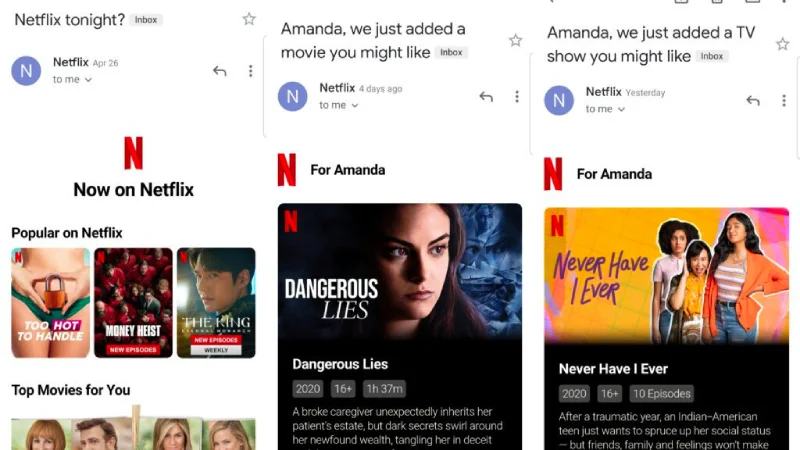
Ultimately, through Data Activation, Netflix has successfully transformed a vast trove of raw data into actionable insights, fueling their personalized recommendations and targeted marketing campaigns.
5 Use Cases for Data Activation
Data Activation can drastically enhance the efficacy of marketing strategies, resulting in improved campaign performance, personalized customer experiences, and a better return on investment. Here's why it's essential:
Building Customer 360 Profiles
Data activation enables marketers to have a 360-degree view of their customers by integrating data from multiple sources – from browsing history to social media engagement, purchase records, and customer support interactions. A holistic understanding of customers allows marketers to personalize communications, offers, and experiences, thereby increasing customer satisfaction and loyalty.
Informed Decision-Making
The ability to make informed decisions can make or break a marketing team in a fast-paced landscape like ours. And having access to your full view of first-party data helps you identify opportunities and make the right decisions. Data Activation ensures that marketers have access to accurate, fresh, actionable data, helping them respond swiftly to changing customer behavior, market trends, or the performance of ongoing campaigns.
Enhanced Personalization
In today's customer-centric era, personalization is key to stand out from the competition. Data Activation allows marketers to segment the total customer base into smaller pieces in order to more deeply understand customer preferences, behaviors, and needs.
With more data, marketers can do more segmentation. That segmentation can then be leveraged to deliver highly personalized content, offers, and experiences that significantly improve customer engagement, conversion rates, and customer retention.
Data-Driven Decision-Making
Data Activation fosters a data-driven culture within the marketing department. By making data accessible and actionable, it encourages marketers to base their decisions on data rather than hunches or assumptions, leading to more accurate and effective marketing strategies that drive better results.
Marketing Attribution
Marketers now have more data to work with when analyzing the effectiveness of all their campaigns and channels. For example, by syncing offline conversions to advertising tools, they can bridge the gap between online ads and real-world purchases, painting a complete picture of customer journeys and enabling strategies that are more targeted, efficient, and impactful.
Data Activation works off the same data as reporting & analytics, so metrics are consistent. And when the entire org works off the same numbers marketers have a better understanding of what's working and what's not, so they can optimize their strategies to improve ROI.
Sure, the digital age has equipped marketers with an abundance of data, but the power of this data can only be unleashed when it's properly activated. ⚡ Data Activation not only makes data accessible and actionable but also bridges the gap between data teams and marketing teams, eliminating the silos that exist in conventional (i.e. uninformed) marketing.
The Importance of Reverse ETL in Data Activation
Reverse ETL plays a pivotal role in Data Activation. But what exactly is it?
Reverse ETL is the process of syncing data from a source of truth like a data warehouse or data lake to a system of actions like CRM, advertising platform, or other SaaS app to operationalize data.
One of the fundamental needs in marketing is the availability of accurate, fresh, and actionable data. Reverse ETL provides the fuel (or, more specifically, data) that powers every Data Activation benefit we talked about in the previous section. But the benefits don’t end there. It also provides:
- Improved data accuracy. Marketers can feel confident that their decisions are based on the most precise and up-to-date data, eliminating the risk of misinformation that can lead to misguided strategies.
- Adherence to data quality, governance, and security assurances set by the data team. This compliance guarantees that the data being used aligns with organizational standards and regulatory requirements.
- Maintains a single source of truth across the business. Instead of dealing with a jumbled, disorganized mound of direct connections, Reverse ETL allows you to build your data system as neatly arranged extensions around a central core (data warehouse). This results in a single, reliable information source guiding each program and process in your stack, enabling you to become genuinely informed by data.
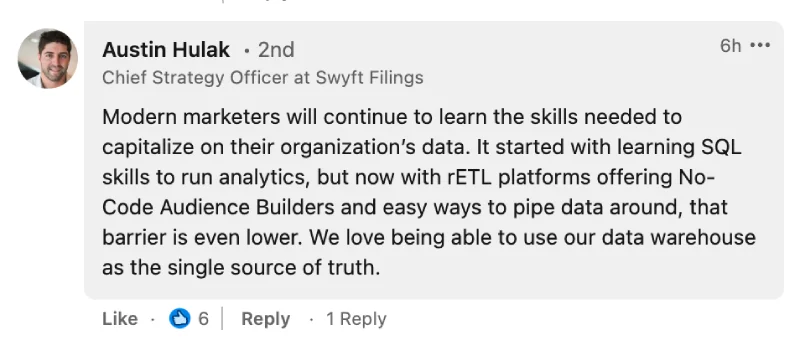
Platforms for Data Activation
It’s worth mentioning that Data Activation is not a new concept – companies have been attempting to operationalize data for years. However, until recently, they didn't have the right tools to do it.
CDPs (Customer Data Platforms) were the first solutions to sell marketing teams on an all-in-one source of truth for customer data, but, more often than not, they fell short of their promises. Traditional CDPs emerged when marketing teams needed a way to collect their customer data, build unified customer profiles, and activate that data across different marketing channels. They attempted to solve this problem by having their own database for data collection, but in the process, they just created another silo of data.
Similarly, iPaaS (Integration Platform as a Service) tools also perform data integration – but they can’t centralize data and serve as a central repository for all teams.
The need for specialized and dedicated tools led to the emergence of composable CDPs. Powered by dedicated Data Activation platforms like Census, these solutions provide data integration, data transformation, analytics and reporting, and segmentation and targeting — all centered around your current data repository.
In this new reality, composable CDPs encourage teams to use their data warehouse as the source of truth for customer data and activate data where it already lives. And with Census, businesses can connect their data warehouse directly to their operational tools, and go from syncing 10 basic fields to 50 comprehensive fields, including:
- Behavioral data based on product usage
- Data from outside of marketing, like support tickets, physical offline conversions, and subscription data
- Third-party enrichment data
Now, data can drive day-to-day operations and strategic decisions.
Implementing Data Activation in Your Martech Stack
Want to start activating data in your warehouse? A Data Activation tool like Census can get you up and running in 5 minutes. 🤯
As a matter of fact, Census’s Audience Hub, a point-and-click segment builder, is crucial to the culture of self-service data access. With this feature, marketing teams can create targeted customer segments and unlock all their first-party customer data, thereby transforming the warehouse into a composable CDP.
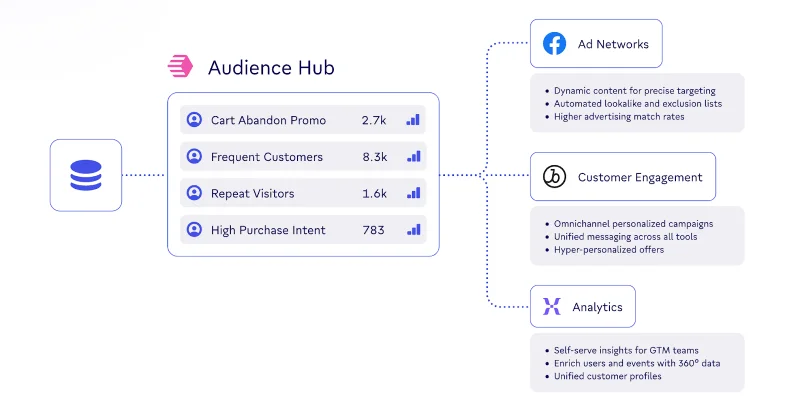
Warehouse-native Data Activation tools bridge the gap between marketing teams and data teams. They allow data teams to define a set of trusted underlying tables or business entities that marketing teams can then use to sync customer attributes, or combine to build dynamic segments of users.
The rise of the data warehouse as the single source of truth paired with industry-leading Data Activation tools like Census takes away the need for organizations to invest in expensive all-in-one CDP solutions that don’t provide time-to-value. With data activation and reverse ETL democratizing access, the data warehouse is best positioned to become the system of customer record that powers not just your marketing technology, but the entire business operations of the company.
Measuring the Impact of Data Activation
The impact of Data Activation can be seen in improved Key Performance Indicators (KPIs) across the board. Whether it's increased customer engagement, lower acquisition costs, higher conversion rates, or improved customer lifetime value, Data Activation can significantly move the needle.
You don’t just have to take our word for it. There are several inspiring case studies that illustrate successful Data Activation implementations.👇
By using Census to send more data into marketing tools like Braze, Canva empowered its lifecycle marketing team to run segmentation experiments faster, resulting in a more personalized, targeted experience for its 125+ million users.
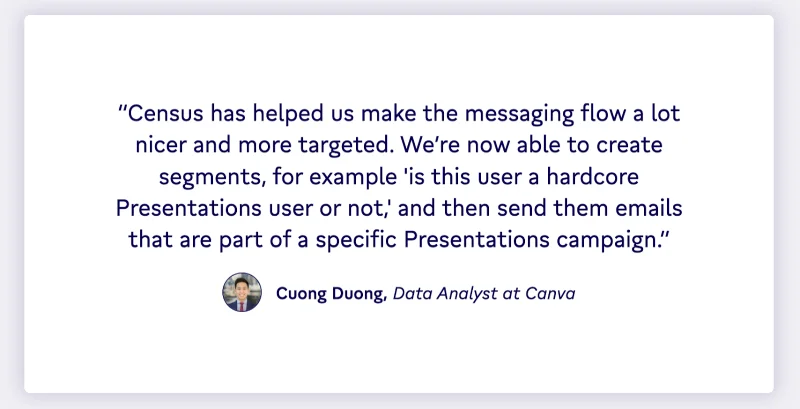
👉Read the full Canva case study.
Zip recently modernized their data stack with best-of-breed components, selecting Census, Snowflake, Fivetran, dbt, and Snowplow. Census’s data activation platform empowers Zip’s Growth Marketing team to segment audiences with all their data in Snowflake, and deliver unified experiences through Braze and in-app messaging.
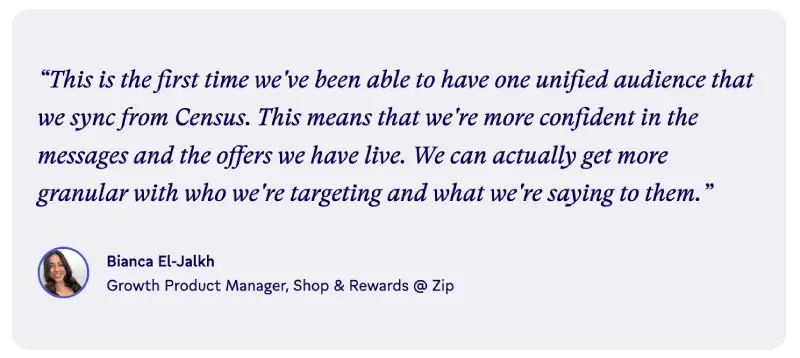
👉 Read the full Zip case study.
When Mixpanel started using Census, data from different parts of the company was stuck in silos. Mixpanel is a leader in product analytics, but their own product usage data wasn't getting to the commercial teams that needed it. Data Activation powered by Reverse ETL helped them break down the silos.

👉 Read the full Mixpanel case study.
Data Activation Brings it All Together
Data Activation is a critical process that helps businesses convert raw data into actionable insights. It activates the central hub of customer data that already exists within the organization, enabling a 360° view of the customer, and fostering closer collaboration between data and marketing teams.
Undeniably, it opens up new opportunities for personalized and data-driven marketing strategies, paving the way for more effective use of modern Martech stacks. By leveraging dedicated tools like Census, businesses can harness the full potential of their data, transforming it from a passive resource into an active driver of marketing success.
Embracing Data Activation isn't just a trend—it's an essential strategy for any business that wants to stay competitive in today's data-driven world. It can supercharge marketing efforts, enhance customer experiences, and drive substantial business growth.
👀 Ready to see how data activation can transform your marketing? Get a sneak peek from one of our product specialists to see how we can help you build audience segments, and sync customer data to all your marketing and advertising tools, without any code. 💪


















